This post is also available in: Italian
Once a land of swamps and brigands, ruled for centuries by rivalling families, and so exquisitely portrayed by Giovanni Fattori, Maremma is a part of Tuscany which is getting more and more popular among national and international tourists. Anybody would simply love the harsh and, at the same time, sweet pristine beauty of this part of Italy, which features gentle hills, vast agricultural fields, ancient and wonderful villages, beaches, hills and mountains.
Just think of the Argentario stretch of deep blue sea, the black rocks of Talamone, the golden beaches of Castiglione della Pescaia, the green hills of Massa Marittima, and the bronze shades of Mount Amiata – all in all, a true natural wonder.
The part of Maremma located in Tuscany is divided into three sections:
Alta Maremma (Upper Maremma), in the province of Livorno. It stretches along the ore-mining hills to the Gulf of Follonica – the ancient land of the Etruscans – and all the way up to Massa Marittima and its wealth of medieval heritage.
Maremma in the Grosseto Area, with beaches and tourist harbours (such as Marina di Grosseto and Principina, Castiglione della Pescaia, and Punta Ala). This territory stretches to the very slopes of Mount Amiata, among quaint villages and ancient castles (for example, Scansano – famous for the Morellino red wine – Campagnatico and Civitella Paganico);
Lower Maremma, which borders Lazio, and features the so-called “Silver Coast”. It overlooks the last stretch of the Tuscan sea and features the “Maremma” or “Uccellina Natural Park”, the beautiful village of Orbetello, the hamlet and the fortress of Talamone, as well as the town of Capalbio (famous for its “radical chic” beach), the rugged Mount Argentario, and the crystal-clear water around Porto Ercole, and Porto S. Stefano. In the hinterland, the cities of Pitigliano, Sorano, and Sovana still retain their wealth of ancient Etruscan heritage and traditions.
Our itinerary runs across this beautiful area, among nurseries, gardens, parks and naturalistic oasis. A short route for sure, but devised to be enjoyed at ease, in the course of several days, in order to discover wonderful landscapes, the culture, and endless collections of plants suitable for hot and arid climates; not to mention educational gardens with so much to teach you about the creation and the management of beautiful green facilities. And… there’s also a wondrous collection of orchids!
Nurseries
The map shows the nurseries and other locations included in our suggested itinerary. Distances are also mentioned, in order to make it easier and more practical for you to make your choice and save petrol and time.
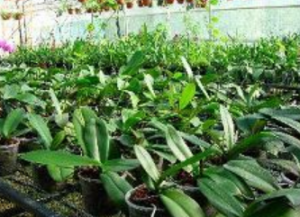
Sughereto/Orchidando Nusery, in Roccastrada (GR): specialized in the cultivation of orchids, reproduced by seed, by micropropagation or by plant division. This nursery is always looking for new varieties.
Distances to other nurseries: 42 miles to Piante Mates – 40 miles to Albiati nursery – 43,5 miles to La Parrina nursery.
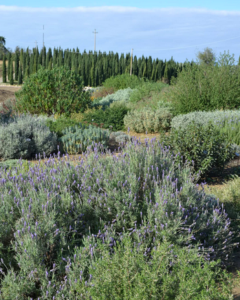
Piante Mates nursery, in Orbetello (GR): founded in 1994 by Luca Agostino, on some 100 acres, it is specialized in the cultivation of Mediterranean plants, including those of Australian origin, suitable for arid climates. The “Botanical Dry Garden” educational facility is currently in its testing-phase inside the nursery.
Distances to other nurseries: 34 miles to Albiati nursery – 41 miles to Il Sughereto nursery – 5 miles to La Parrina nursery.
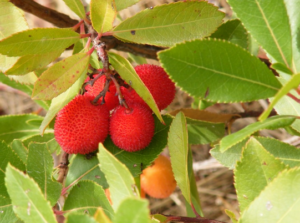
Albiati Nursery, in Albinia (GR): born on a former farm, it currently features 23 acres out in the open and a 2.500 square-yard, heated greenhouses. In this nursery, visitors can find the typical species of the Mediterranean area, such as strawberry trees, myrtles, rosemary, Phillyrea, cork trees, cheesewood, laurels and cypresses – everything is grown and cared for according to modern techniques which still involve the most traditional materials from the Maremma countryside. Green space designing, building and maintenance services are also available.
Distances to other nurseries: 1,8 miles to La Parrina nursery – 40 miles to Il Sughereto nursery – 34 miles to Piante Mates.
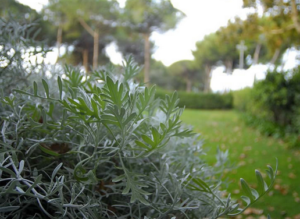
Antica Fattoria La Parrina Nursery, in Quattrostrade (GR): this is a famous nursery inside the “Antica Fattoria La Parrina” farm, which produce wines, cheeses, oil and fruit. The nursery is specialized in Mediterranean plants and other varieties from similar climates, suitable for gardens in dry, arid environments, as well as on the seashore. In particular, there’s an interesting collection of oleanders and ancient “scrub plants”, ideal for dry gardens, or in arid areas that require little care and irrigation. The owner, Fabio Fusari, would gladly guide you around his great nursery, by appointment.
Distances to other nurseries: 43,5 miles to Il Sughereto nursery – 5 miles to Piante Mates – 1,8 miles to Vivaio Albiati Nursery.
Gardens, parks and reserves along the itinerary
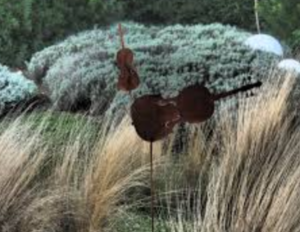
Il Giardino Secco /Dry Garden, in Orbetello (GR): annexed to Piante manes nursery, this wonderful garden showcases several plant species which can survive without any proper irrigation system. Patches of evergreen shrubs and silver leaves, germanders, rosemary, lavender and many other plants typical of the Mediterranean climate are mixed with the soft tuft used for ornamental grasses, coming to life in spring and summer with a thousand small flowers. The heart of the garden is the amphitheatre surrounded by several cypresses: it usually serves as a most exquisite venue for concerts and other events. In the garden, visitors can also admire the evocative works of art made with Corten steel, which belong to the Musicalia collection (dedicated to music as the name suggests), by landscape architect Vittorio Peretto.
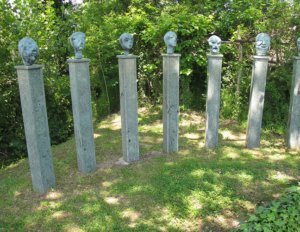
Giardino di Daniel Spoerri, in Seggiano (GR): opened to the public in 1997, this garden was actually built in the early 90s when the Swiss artist Daniel Spoerri began the construction of a sculpture park. It currently houses 103 bronze works of art by 50 different artists, including Eva Aeppli, Arman, Erik Dietman and Jean Tiguely, harmoniously integrated into the landscape rich in chestnut and olive trees, as well as several plants belonging to the typical Mediterranean scrub. A dedicated botanical path is available for the visitors.
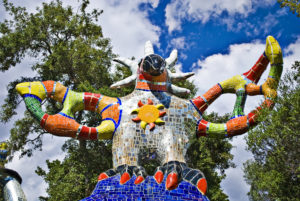
Il Giardino dei Tarocchii, in Capalbio (GR): this is a sort of esoteric facility, populated by the very Major Arcana from the very deck of Tarot cards. It was created by “Niki” de Saint Phalle (the French-American artist Catherine Marie-Agnès de Saint Phalle). Twenty-two imposing figures made of steel and concrete are thus covered with glass, mirrors and colourful ceramics, standing out even from afar among the natural landscape. The garden is enclosed by the long wall of the entrance pavilion, created by the architect Mario Botta from Ticino.
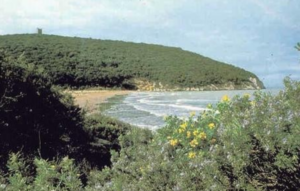
Parco Regionale della Maremma, Grosseto: the first park in Tuscany, established in June 1975 and covering some 243.000 acres along the coast, from Principina a Mare to Talamone.
Inside the park, there are marshy patches of land near the mouth of the Ombrone River, which are home to thick colonies of birds; farther south, there are the Uccellina Mountains, covered by dense Mediterranean scrub and, to the east, by vast grassy expanses. The other relevant features are the Mediterranean scrub, the rows and the trees, as well as the small groves of stone pines.
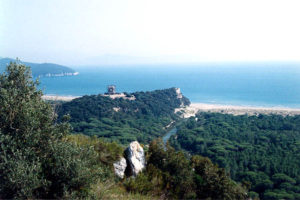
Parco Naturale dell’Uccellina: part of the Maremma Regional Park, this facility can be reached by car or shuttle bus, and never fails to prove of great naturalistic and historical-artistic interest; it contains, for instance, several Roman watchtowers and the historical Abbey of Saint Rabano.
The nearby coastline is both tall and rocky, directly overlooking the sea and quite bare of vegetation – it also features some coastal dunes. The vegetation is typically Mediterranean, made of woods, scrubland, garrigue, dunes, and clearings where many wild orchids grow. There are wild boars, foxes, porcupines, wild cats, hedgehogs and, along the waterways, many birds, mostly belonging to migratory species. The Uccellina Natural Park can be explored on foot, by bicycle or on horseback while there are also some quaint farm stay facilities around this area.
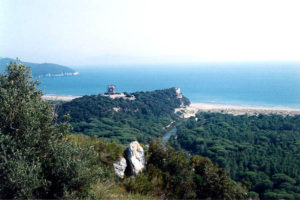
WWF Orbetello Lagoon Oasis (GR): this oasis protects a very precious area that is also home to several species of migratory birds. The vegetation is that of the Mediterranean scrub, with mastic trees, myrtle and strawberry trees, as well as thick forests of pines along the coastline, thick carpets of glasswort, poplars, ashes, cork oaks and elms.
Other oasis and interesting activities available in this area, please visit luoghi.italianbotanicaltrips.com/toscana/grosseto-gr/?category=parchi-naturali-riserve-oasi-paesaggi-birdwatching-passeggiate
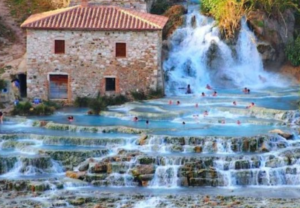
Saturnia Free Spa, in Manciano (GR):
very close to the private Terme di Saturnia spa, there are some small natural pools, fed by a nearby waterfall. The water flows from a natural spring at a temperature of 99.5 ° F and thanks to thermal plankton it has beneficial effects on the skin, the digestive, circulatory, motor and metabolic system. This public spa looks absolutely wonderful in winter, especially at night, when they are usually no visitors.
Where to stay

Antica Fattoria La Parrina, in Albinia (GR): this is a historic farm in the Tuscan Maremma; it produces wine, cheese, oil and fruit, offering a charming farm stay facility as well. The latter features 4 apartments and 12 rooms (all different from each other) inside the ancient mansion, furnished with original furniture with sober and elegant taste. The guest rooms have no television, nor telephone, thus recreating the real ancient history dwelling of the past and let you make the most of your stay in the very heart of pristine and untainted nature.
This post is also available in: Italian


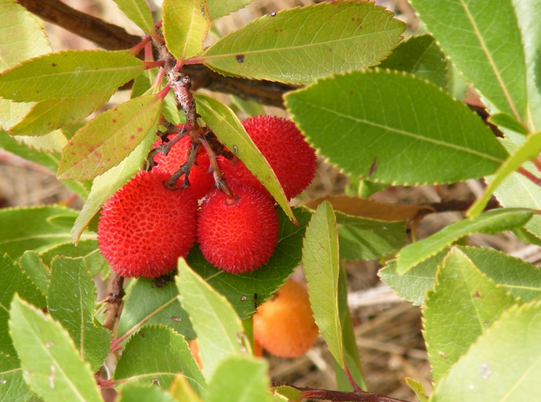
Leave a Reply